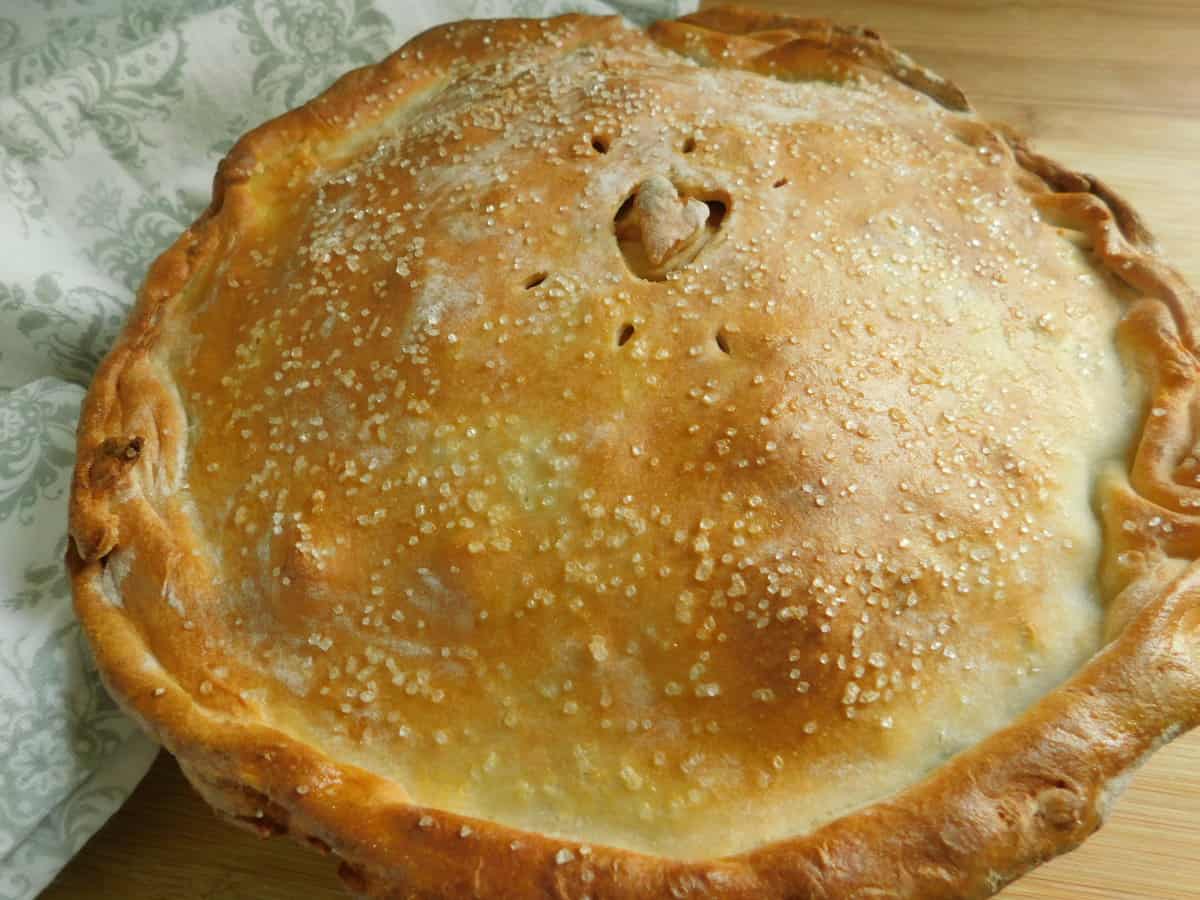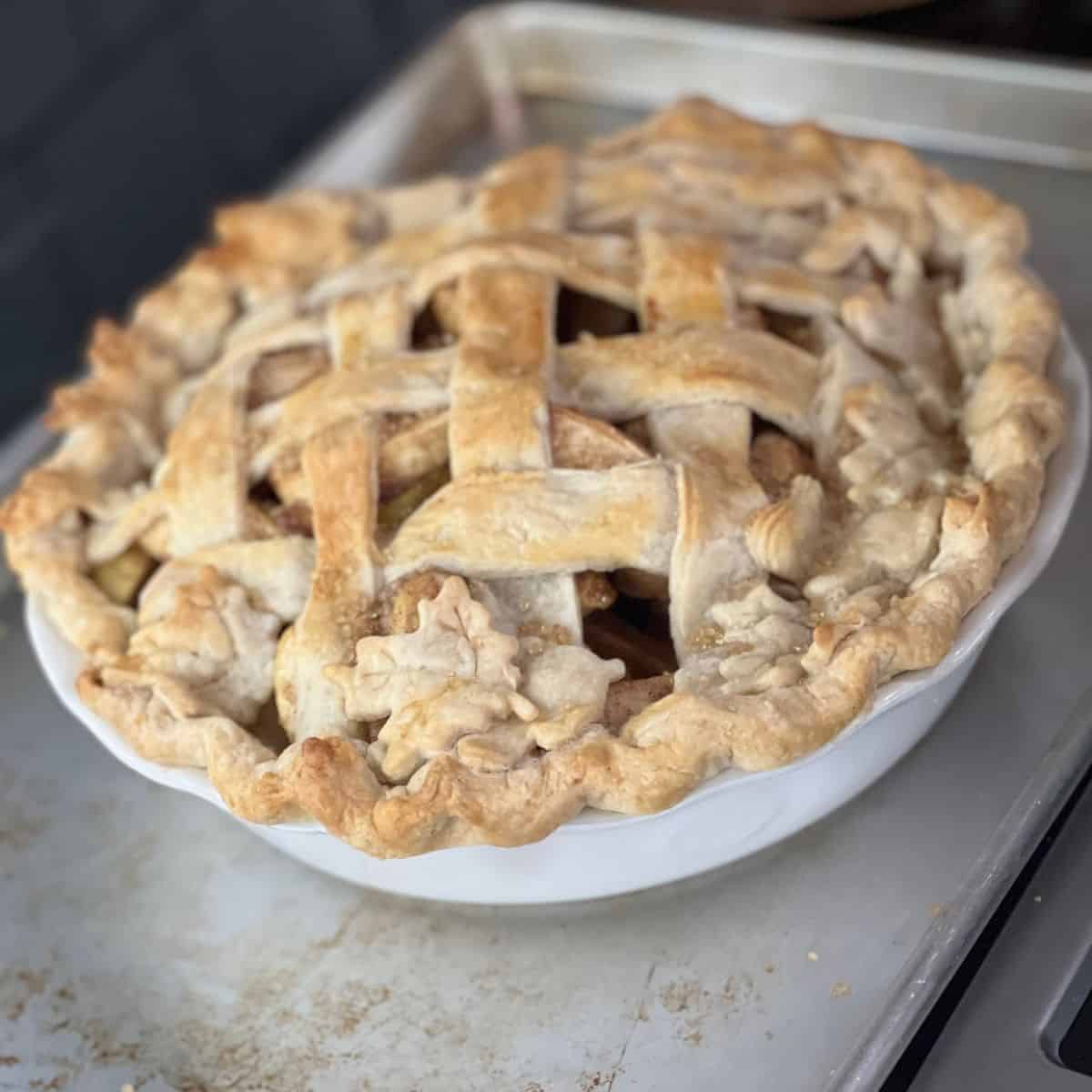Making a tender, flaky pie crust can be challenging, and you are not alone if you struggle with it. The right texture for a pastry as delicate as pie dough can be difficult to achieve, and several factors determine a good crust. These factors include measuring the ingredients correctly, allowing the dough to rest, and, most importantly, choosing the right recipe to begin with.

But above all, you might be surprised to learn what a particular secret ingredient can do for your pie: vodka! Yep, that’s right. When you include this type of alcohol in your dough, you instantly upgrade its quality because it improves the texture significantly and prevents the crumb from being too tough or dense. If you’re curious about this concept, we’ll explain why it works and how you can try it out yourself.
Why You Should Be Adding To Vodka To Your Pie Crust
There’s more than one reason, and they all have to do with the dough’s texture. Vodka helps create layers upon layers of flaky, buttery crust that’s light and flavorful.
What Does Adding Vodka to Pie Crust Do?
Vodka provides the dough with plenty of moisture and makes it much easier to work with. Do you ever get tired when you’re rolling out your dough? Well, the good news is that using vodka in the recipe doesn’t take as much elbow grease! This ingredient makes the dough easily roll out instead of constantly springing back.
Although you can try this with shortcrust or other pastry that you use as the base for pies, we recommend trying this with a traditional pie dough that involves flour, butter (or another type of fat), water, and often, sugar and salt.

The Science Behind Gluten
Whether you make your dough by hand or use a stand mixer, one of the most common mistakes people make with pie dough is overmixing it. This results in the dough being super tough. And even if you’re super careful, you might still end up with a dough that isn’t as flaky as you want. There’s a scientific reason for this! Let us introduce you to the world of gluten.
You might think gluten is a part of bread or that gluten and flour are the same. Don’t get ahead of yourself, though! It’s not exactly that. King Arthur Flour states that flour contains different types of proteins that create gluten when mixed with liquid. So, when you throw all of your pie dough ingredients into a bowl and get mixing, you bring those gluten strands to life, and the more you mix, the more strength you give them.
Forming gluten is desirable when you want a nice, chewy bread, but not when you want a soft and tender product like a pancake, cookie, or pie dough. Okay, you might be wondering what this has to do with vodka, and don’t worry, we’re getting there.
How Does Vodka Affect Gluten?
You see, when you add vodka to the dough mixture, it inhibits the formation of gluten. Of course, scientifically, alcohol is different from other liquids like water, and it is shown entirely in this context.
In simple terms, food scientist Guy Crosby says that “the alcohol in vodka does not develop gluten like water does. So adding vodka adds liquid that helps to make the dough more workable and pliable without developing tougher gluten.” Therefore, it helps all of your dough ingredients form into a ball, but it does not strengthen all of the tough protein strands like if you use water or even milk.
Does Alcohol Bake Out of Pie Crust?
There is no need to worry about tasting the alcohol in your baked goods. It evaporates faster than water, ensuring that your crust will be well-developed and have the perfect texture. This means you can easily slice and serve from the pie tray without worrying about a soggy bottom crust that looks sloppy on the plate.
Although What’s Cooking America reports that it’s impossible for alcohol in baking to be entirely removed, most of it is. The amount left is so minuscule that it doesn’t affect you. So, no, you won’t get drunk from your apple pie; don’t fret!
How To Use Vodka In Pie Crust
We recommend using 80-proof vodka, which is 40% alcohol by volume. If you are hesitant to entirely substitute the water in your recipe for vodka, try using a proportion of half water and half vodka to start. You can always add a little more or less if it needs some adjusting. Use your best judgment depending on how the dough looks and feels.
It shouldn’t be overly crumby and struggling to form into a ball. Ideally, it should be soft and malleable but not sticky. Remember that you need to roll it out; this isn’t cookie dough that you’re scooping! When in doubt, you can always go on the hunt for a vodka pie dough recipe that is tried and true so you feel more confident about it.
In Conclusion
Ultimately, this secret ingredient might seem unexpected, especially to folks who typically don’t use alcohol in baking. Nevertheless, different types of alcohol are constantly used in baked goods for multiple reasons. They can give the pastry more flavor or a more desirable texture, depending on how you use them.
While you can experiment with different types of liquor in your pie crust to give a unique undertone to the dough, we believe that a classic vodka is the best option since it doesn’t alter the taste of the pie crust after it bakes.
While we appreciate the moisture and flaky layers that it gives the dough, we are not necessarily fond of having flavored liquor distract from the final product of the baked good. At the end of the day, there’s nothing quite like a slice of pie, whether it’s pumpkin, apple, pecan, or any other classic filling nestled in a buttery crust.

